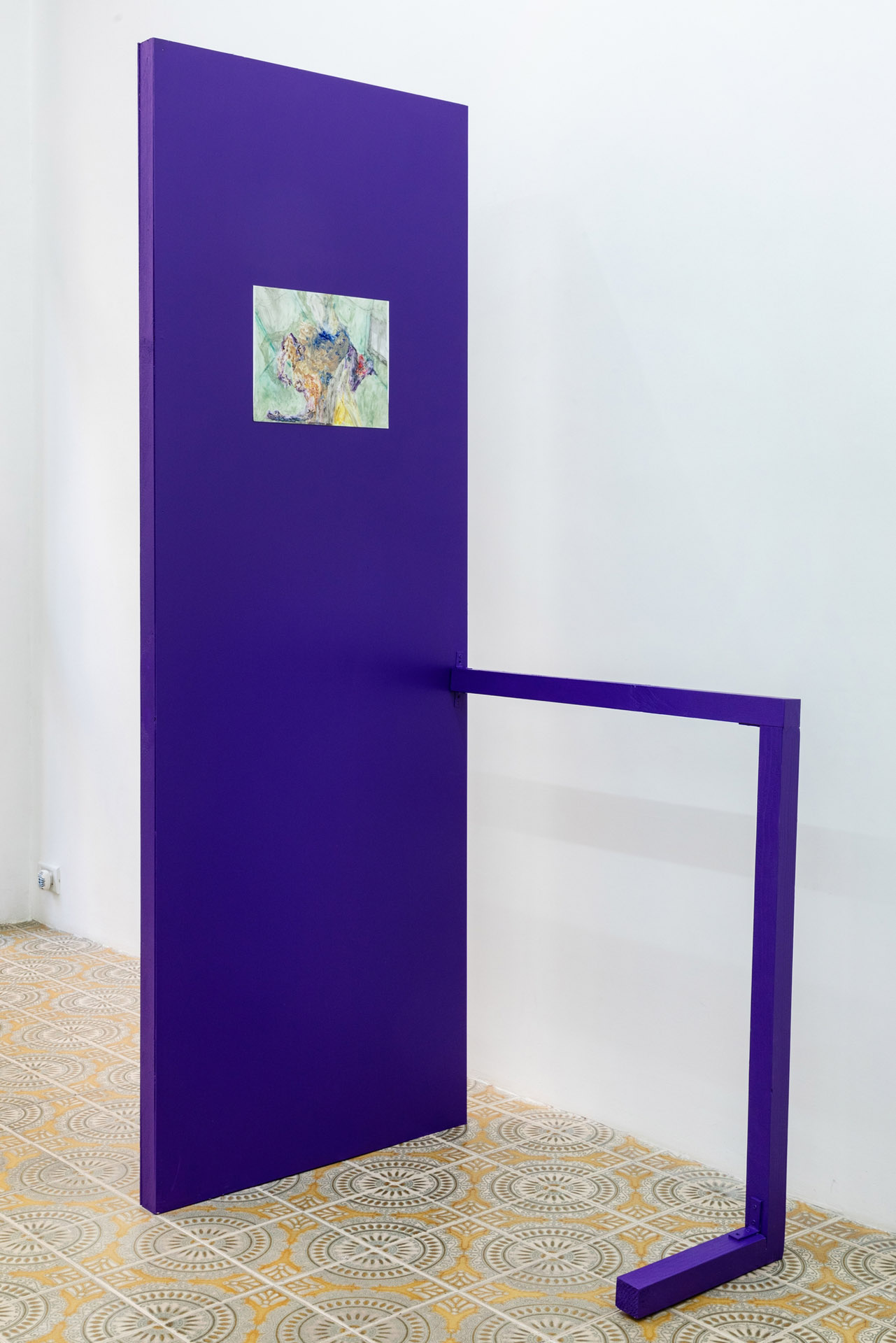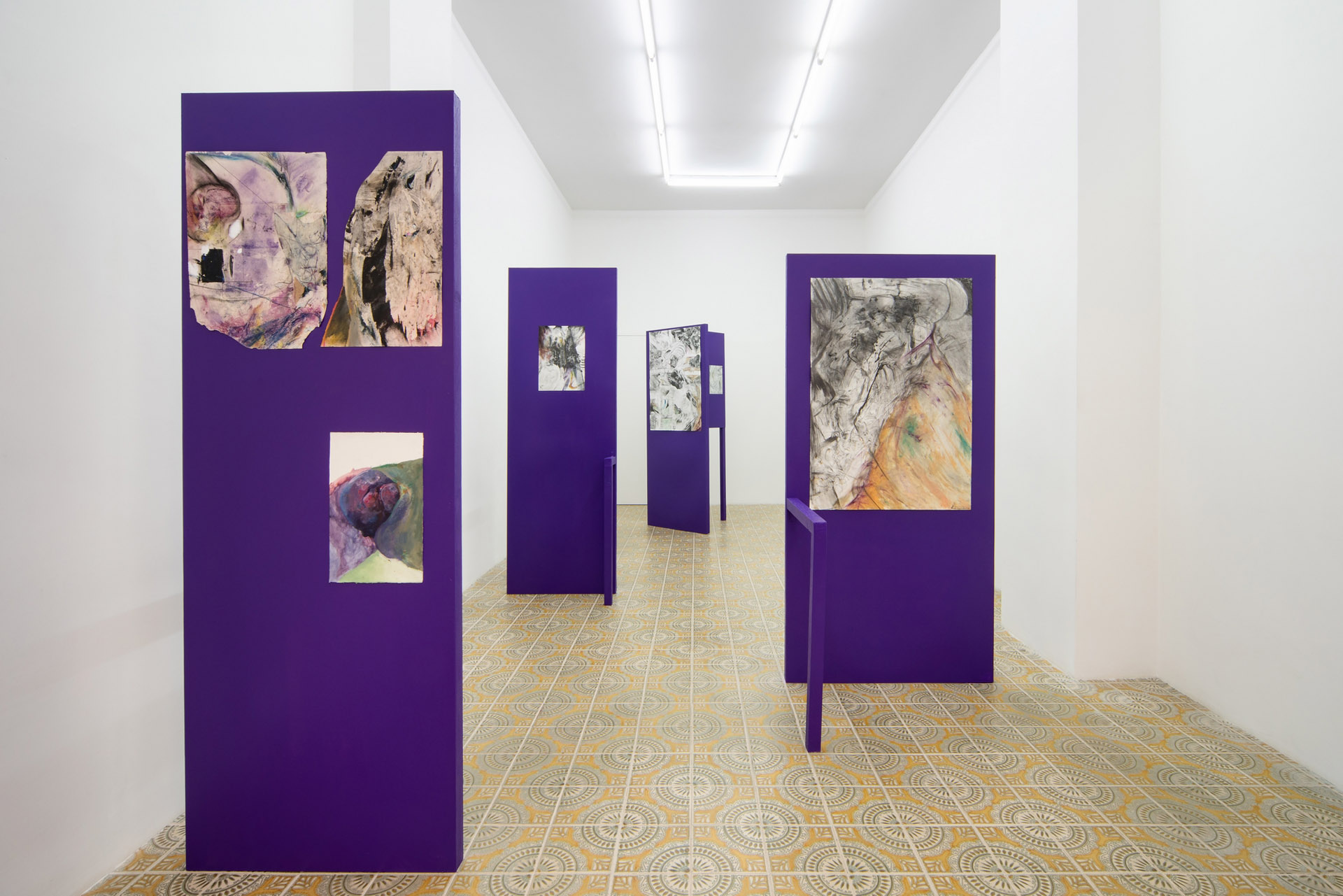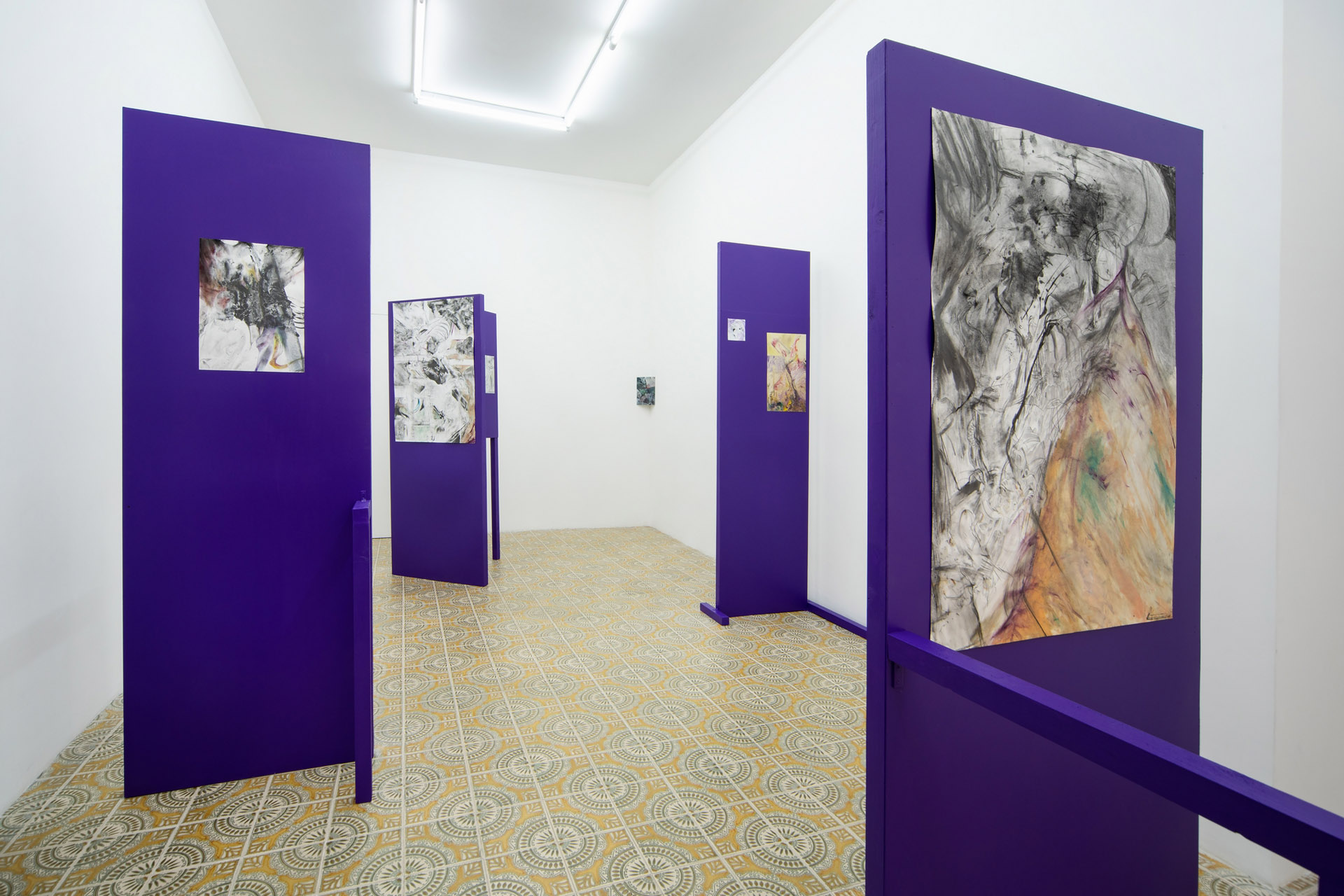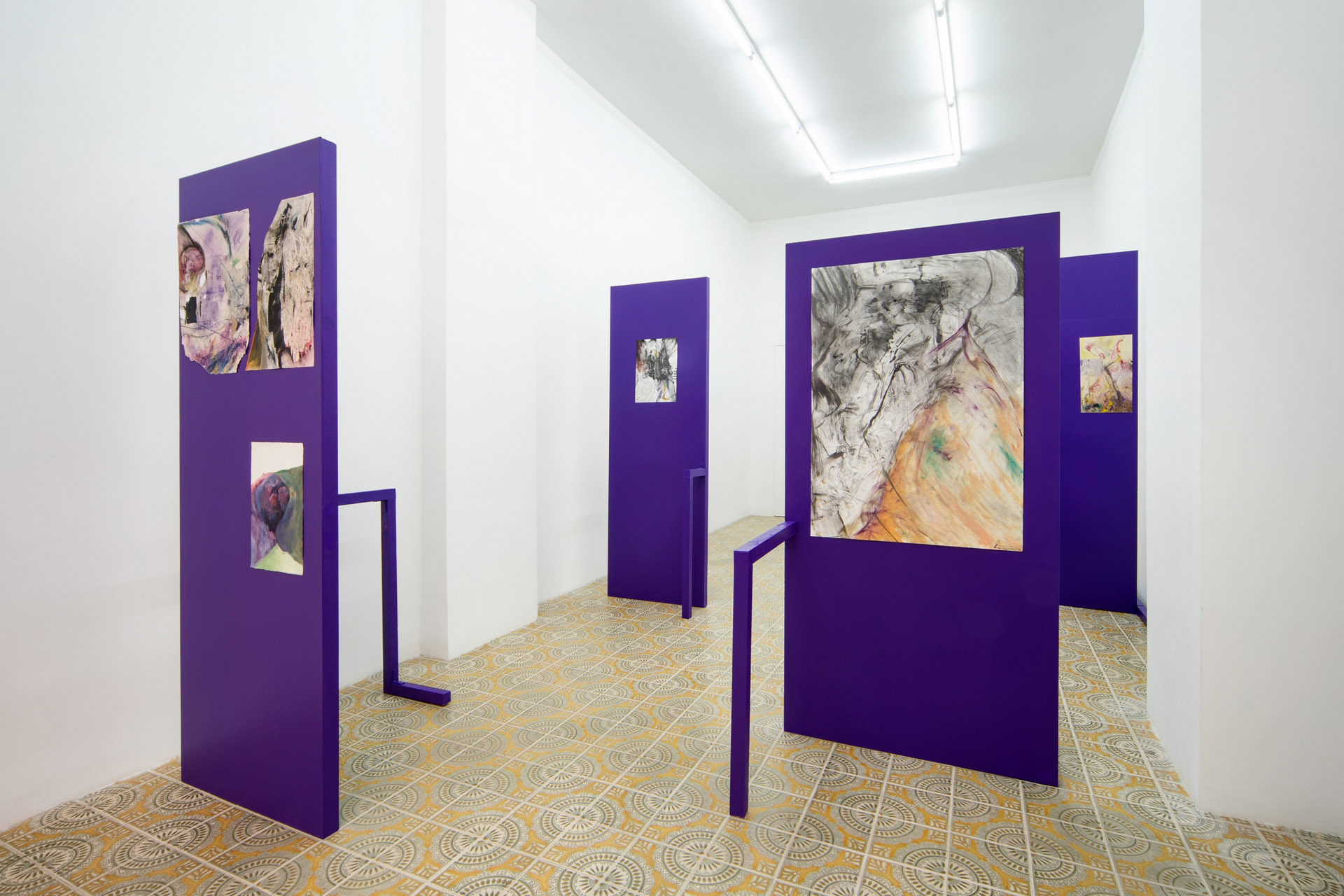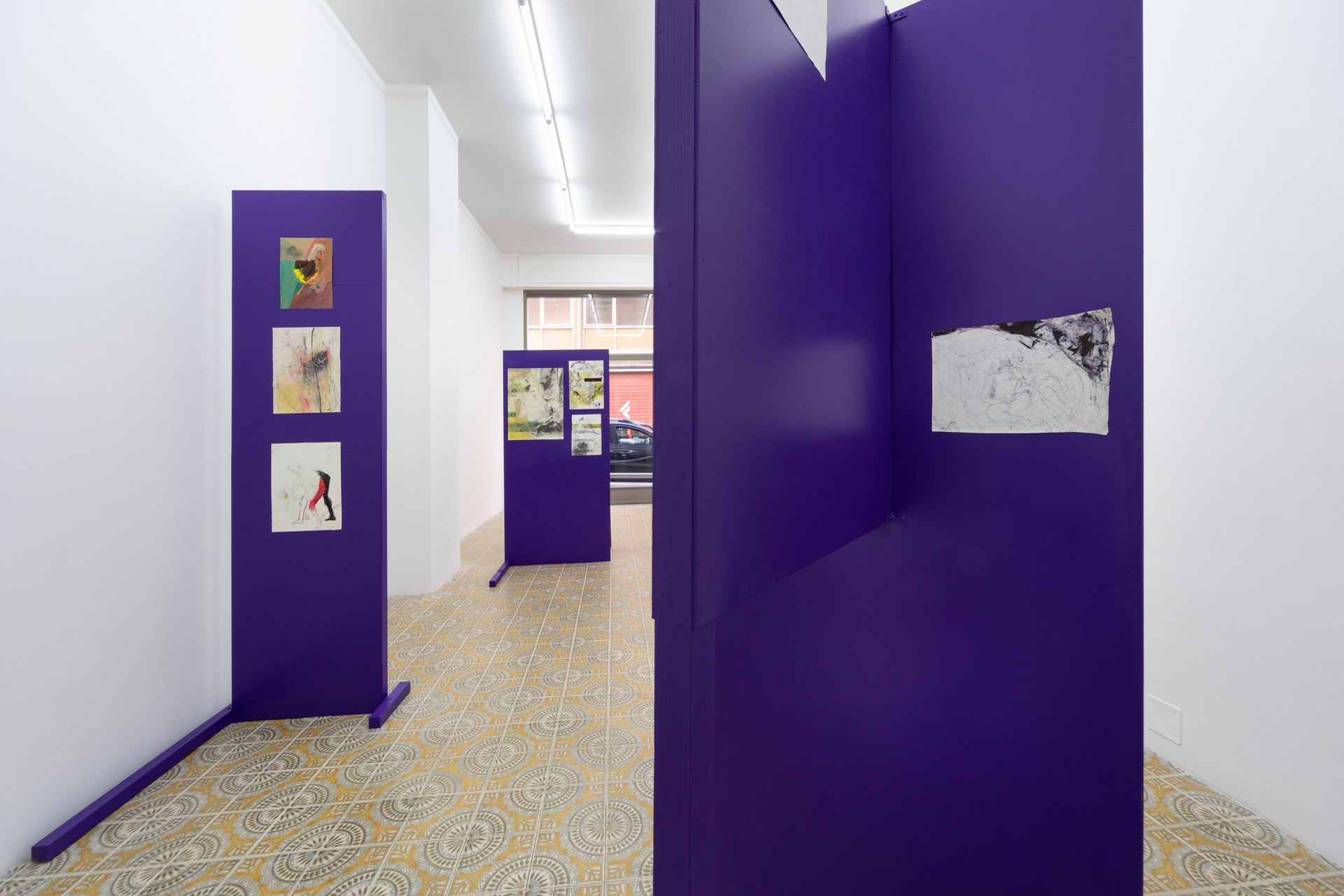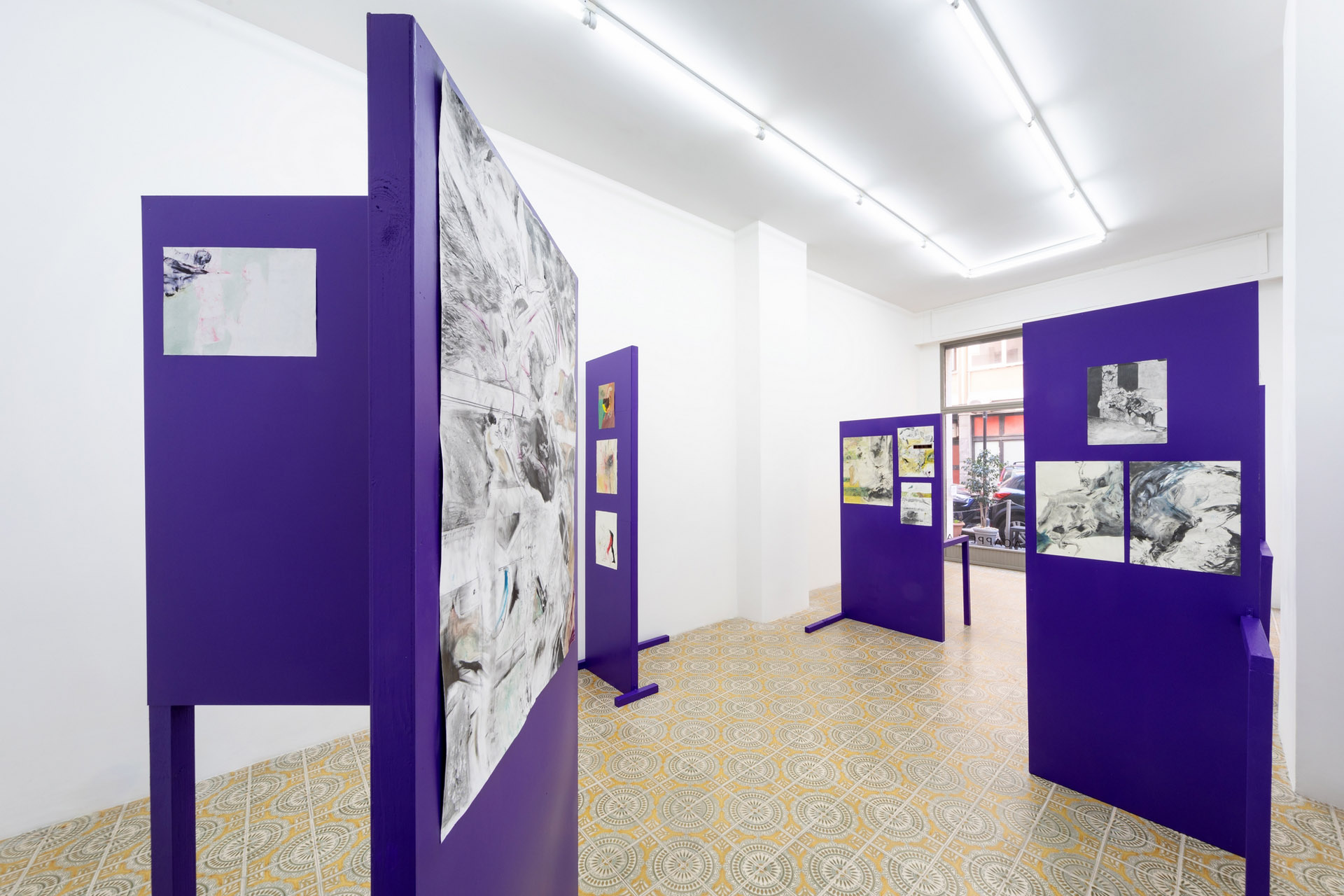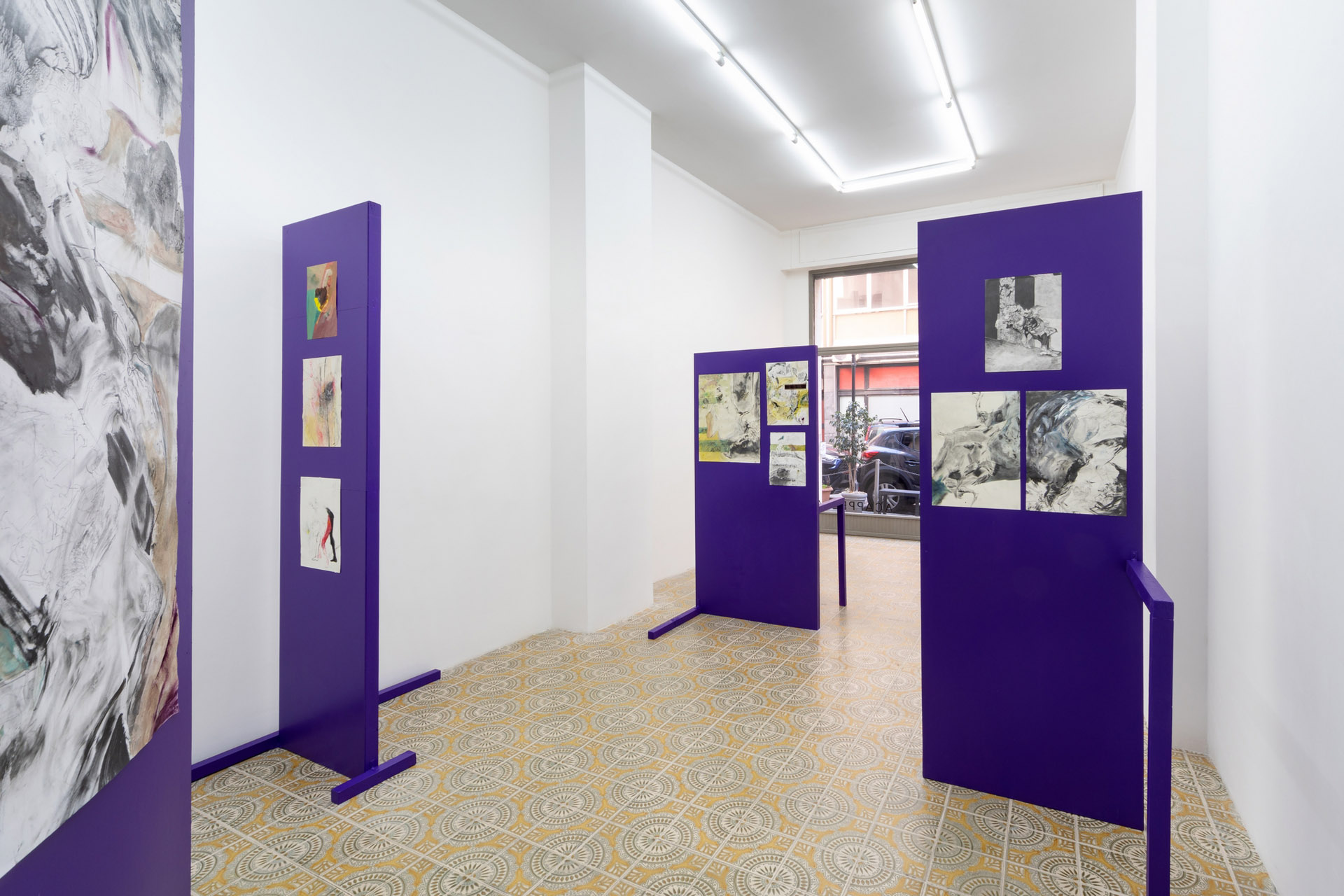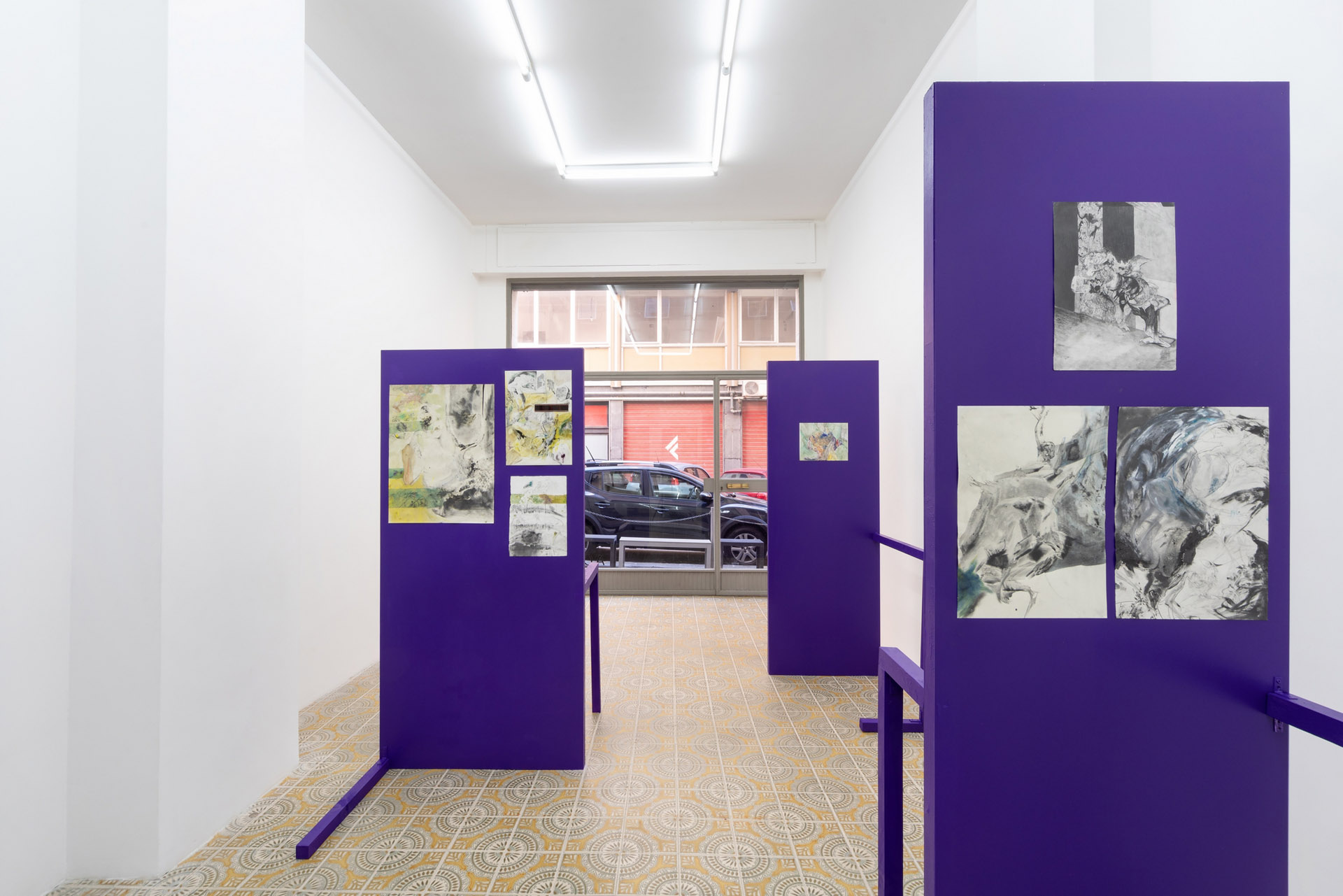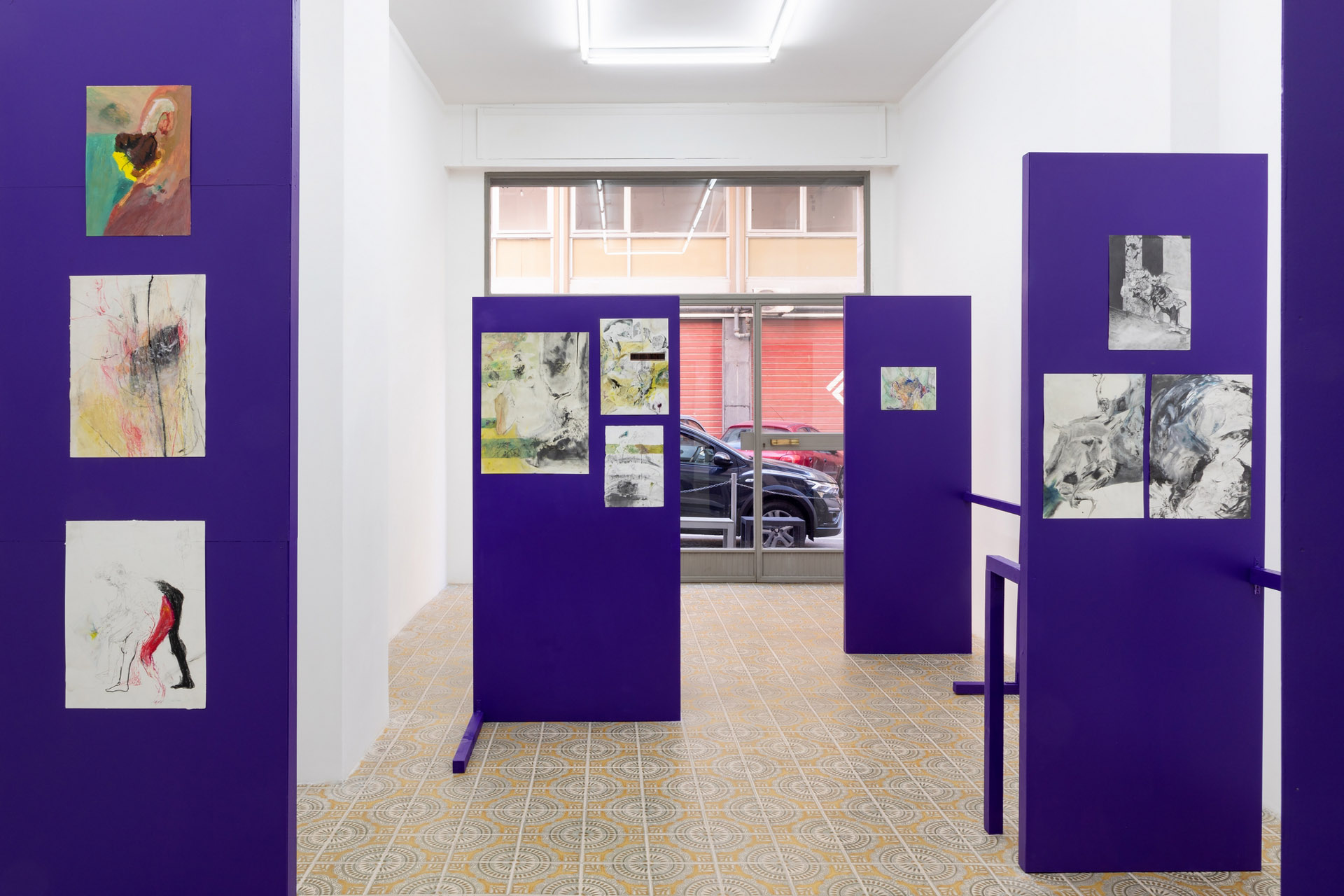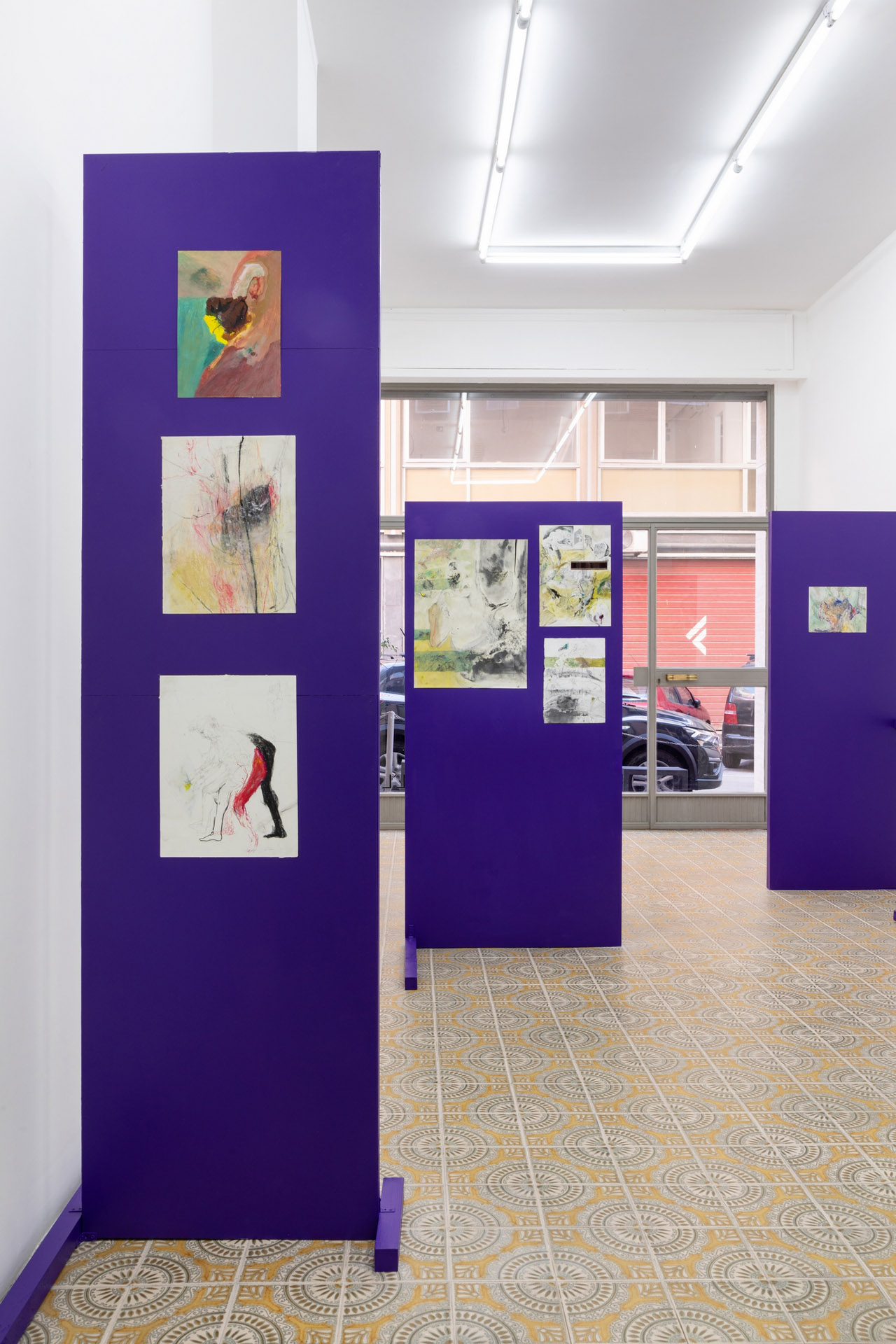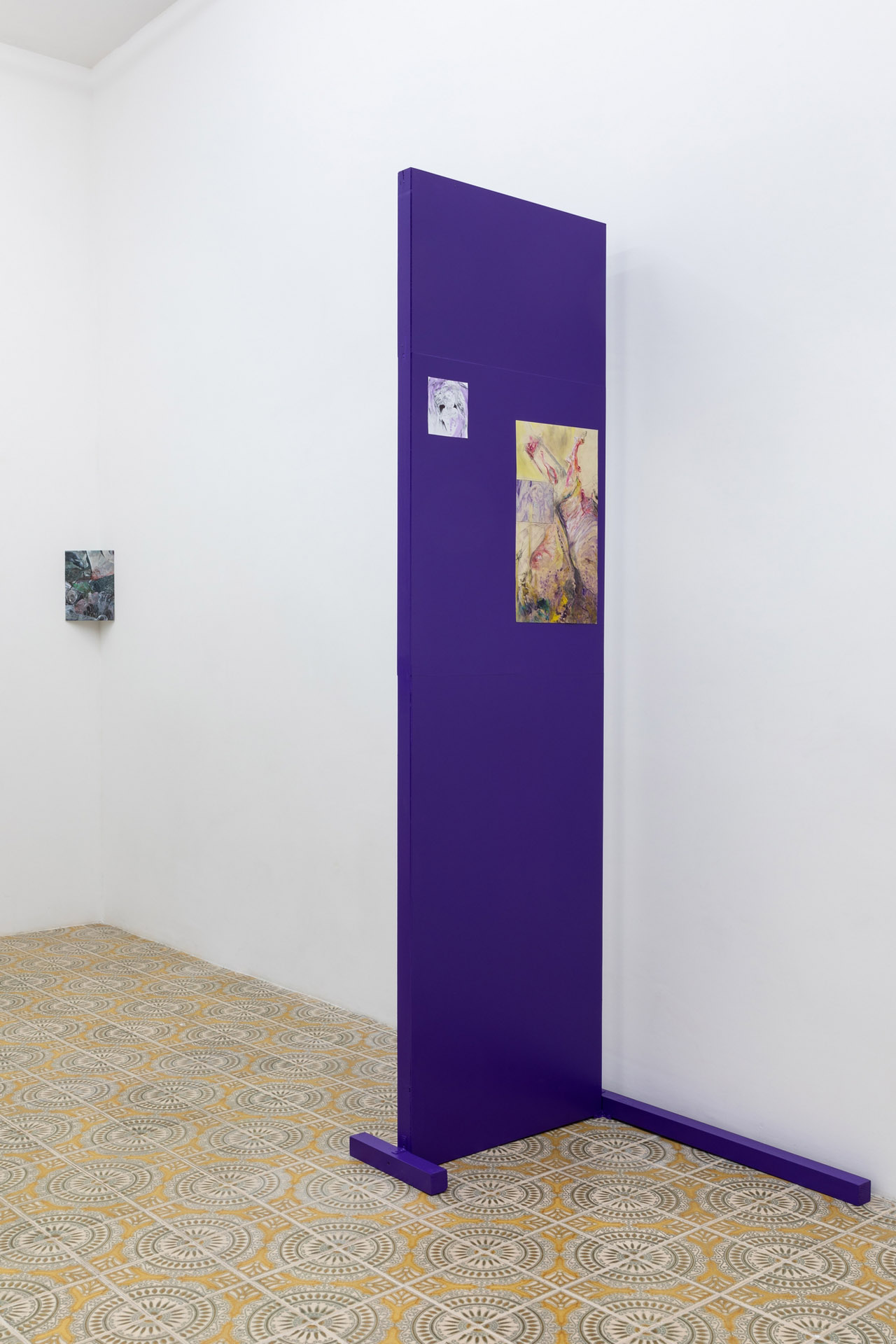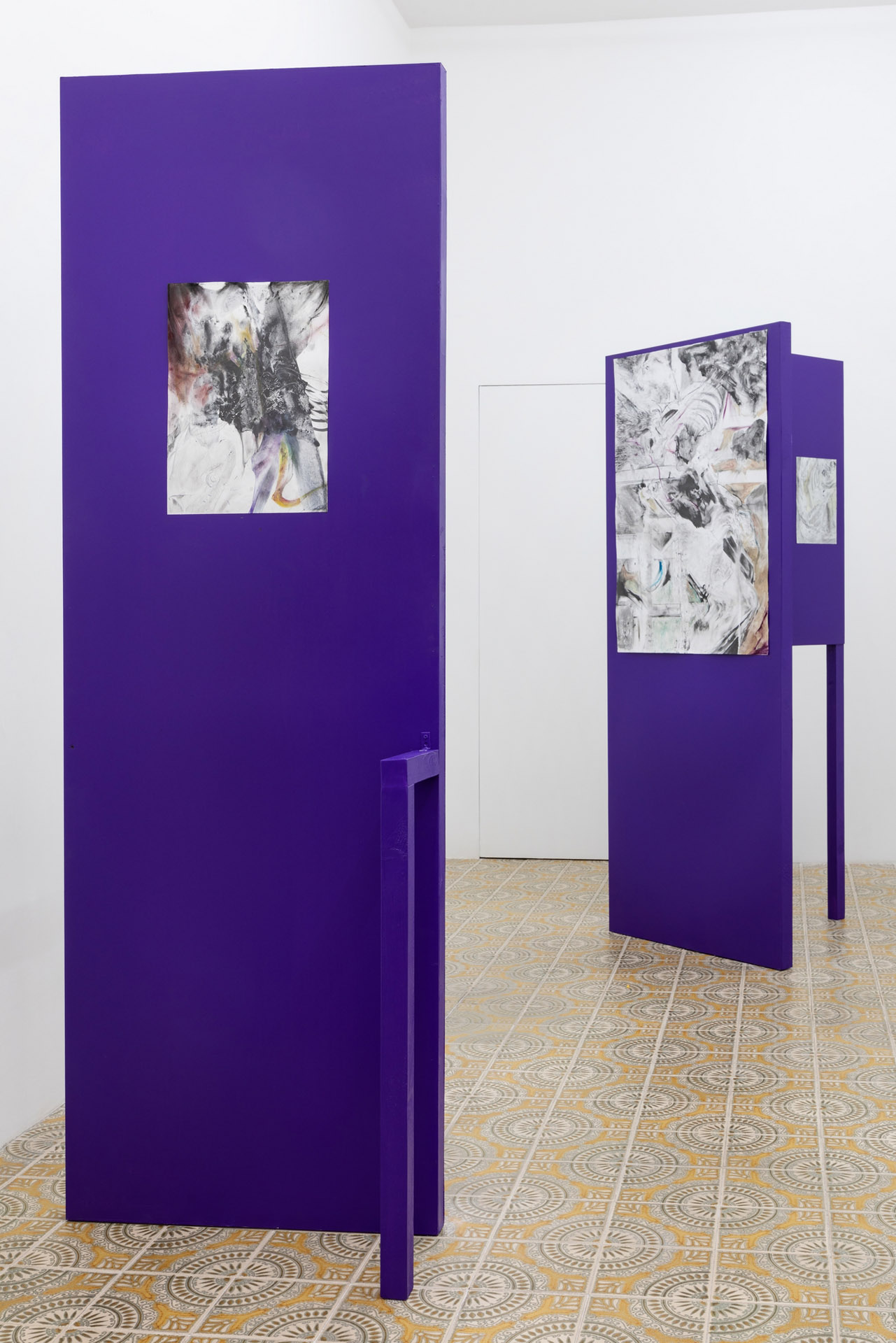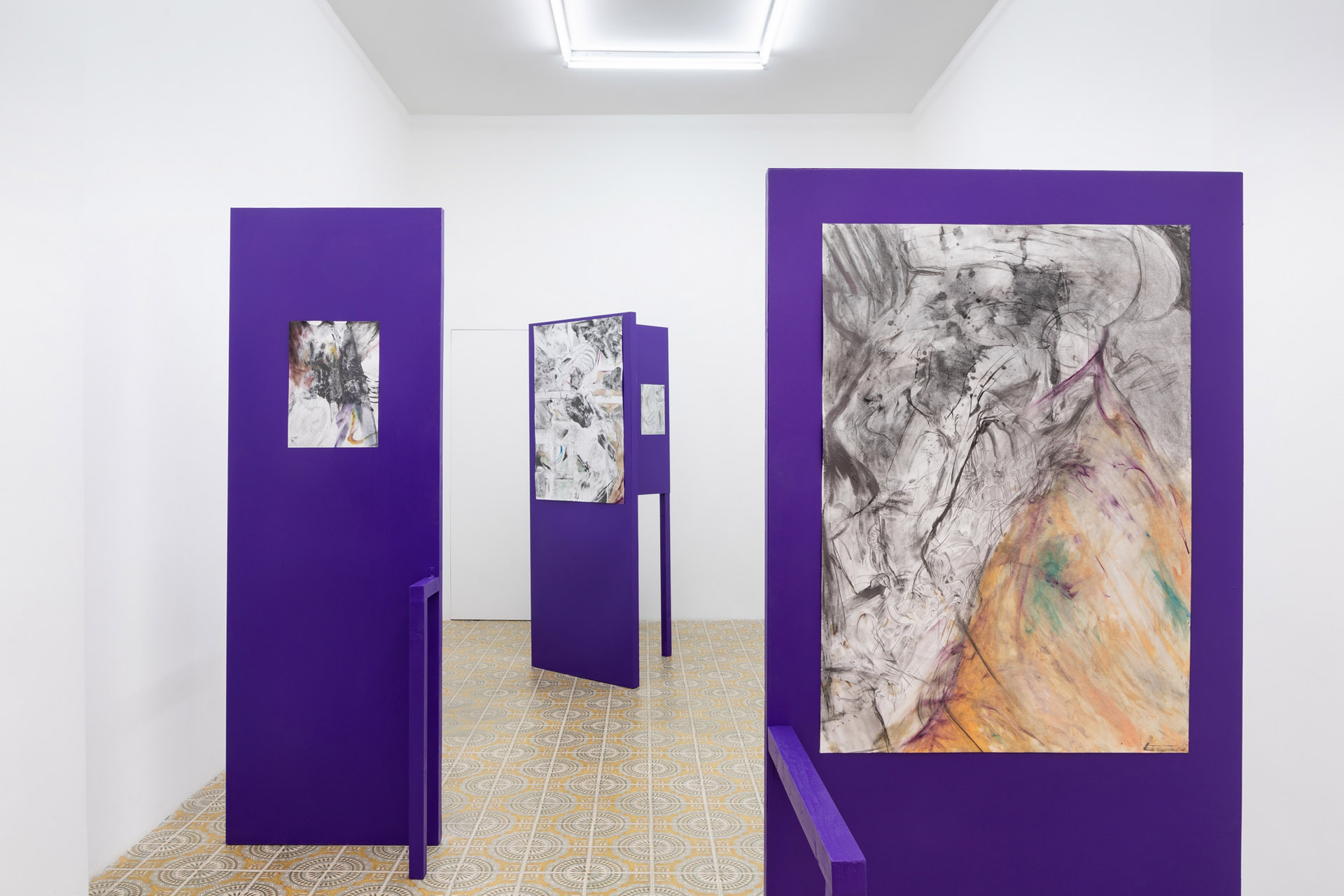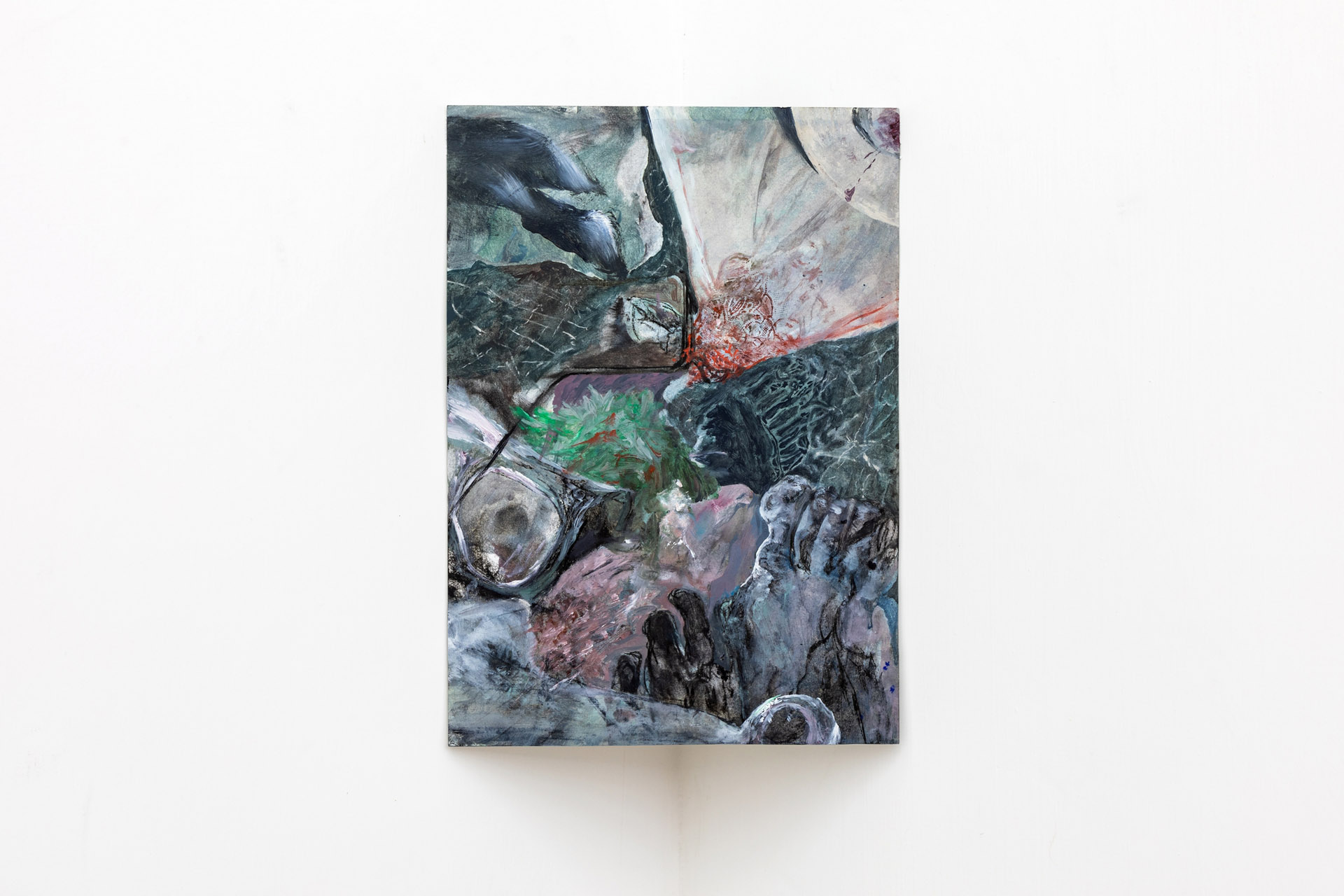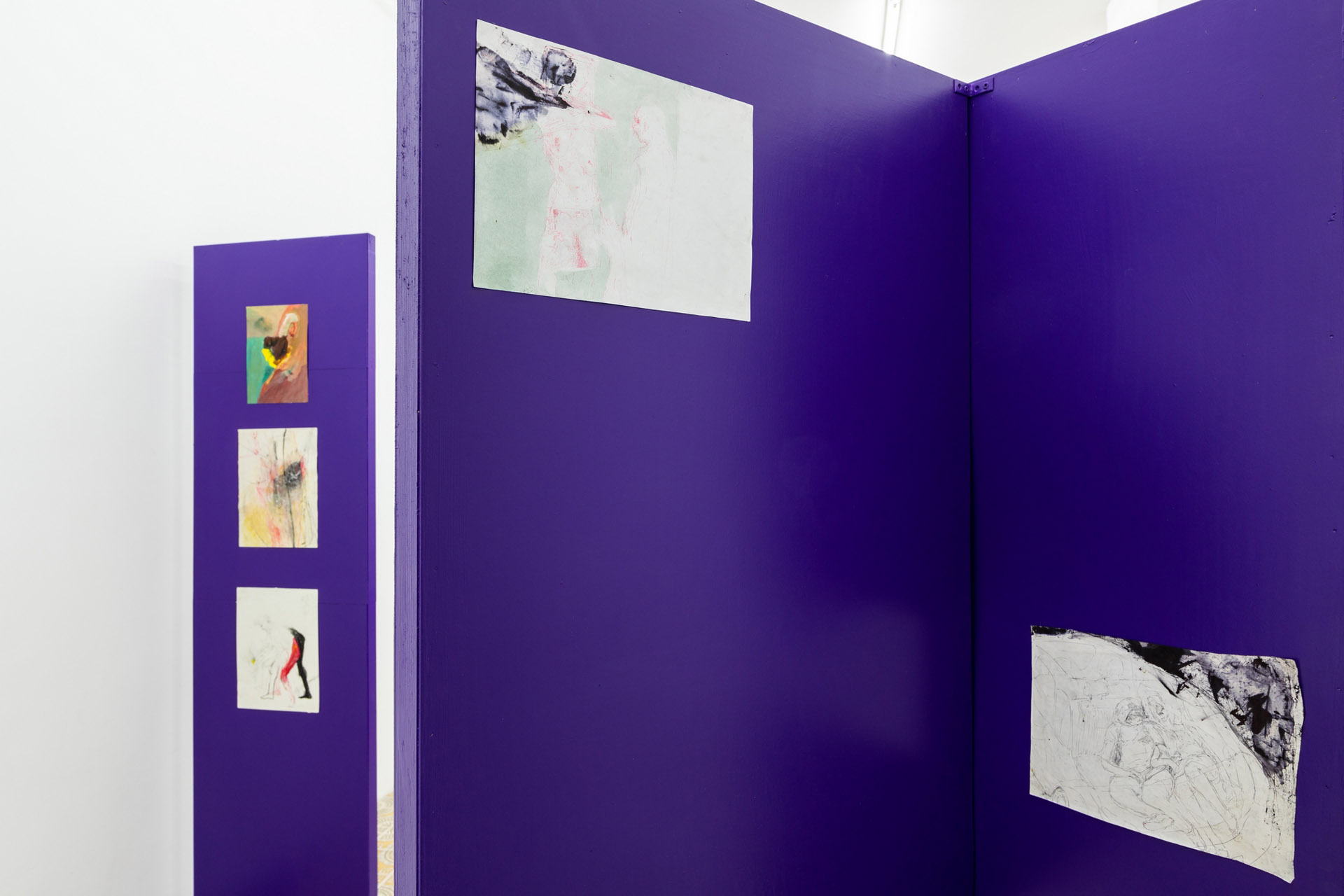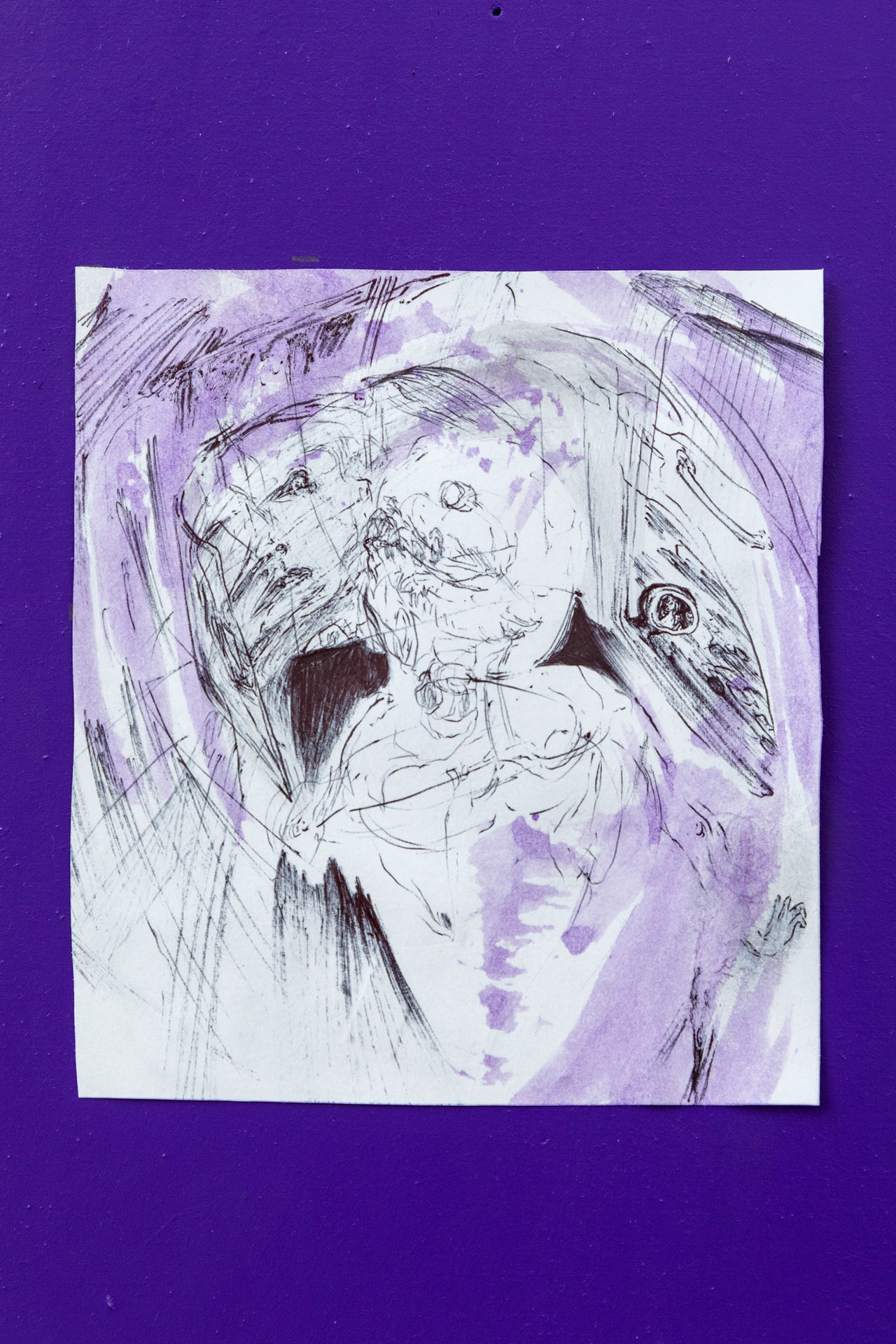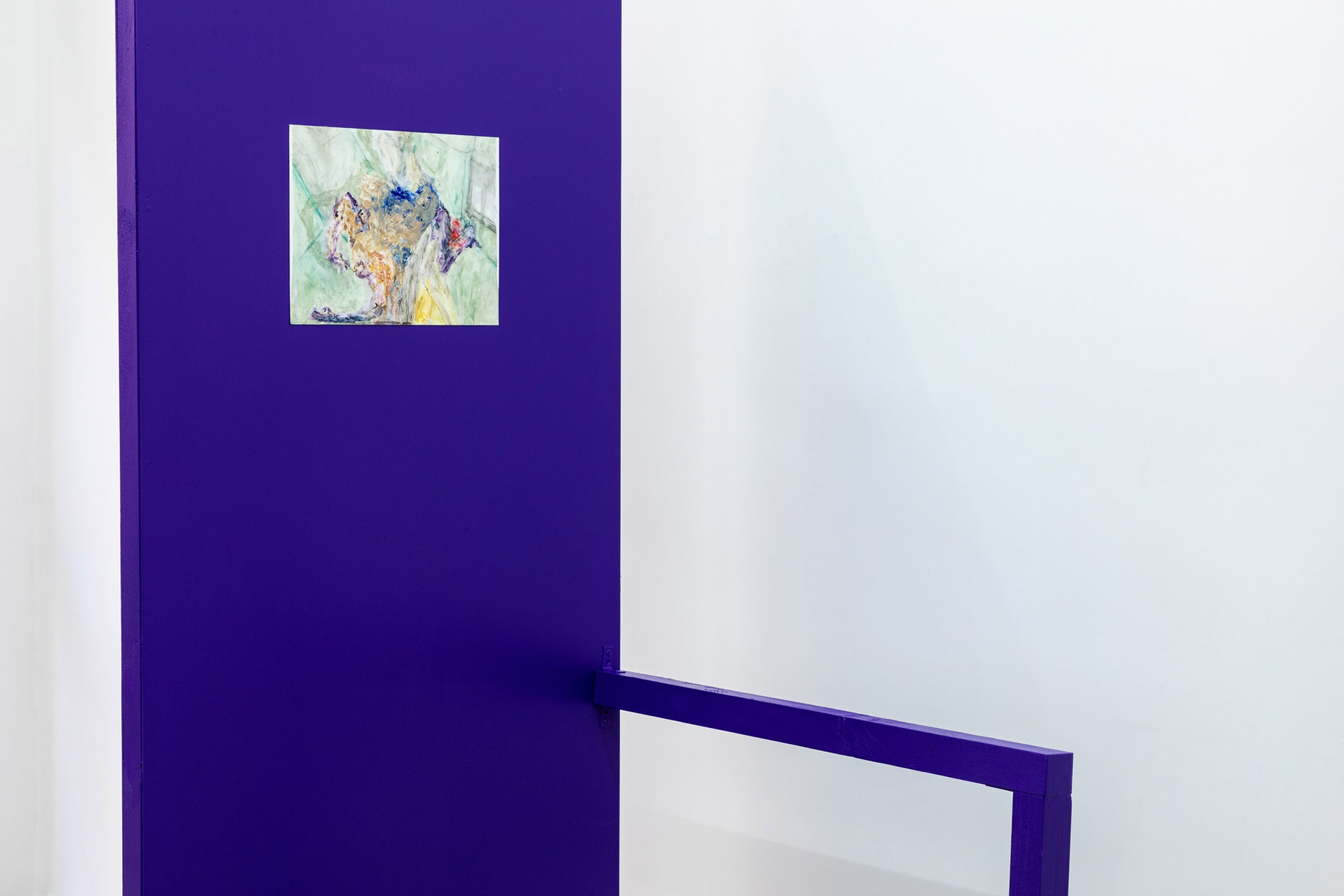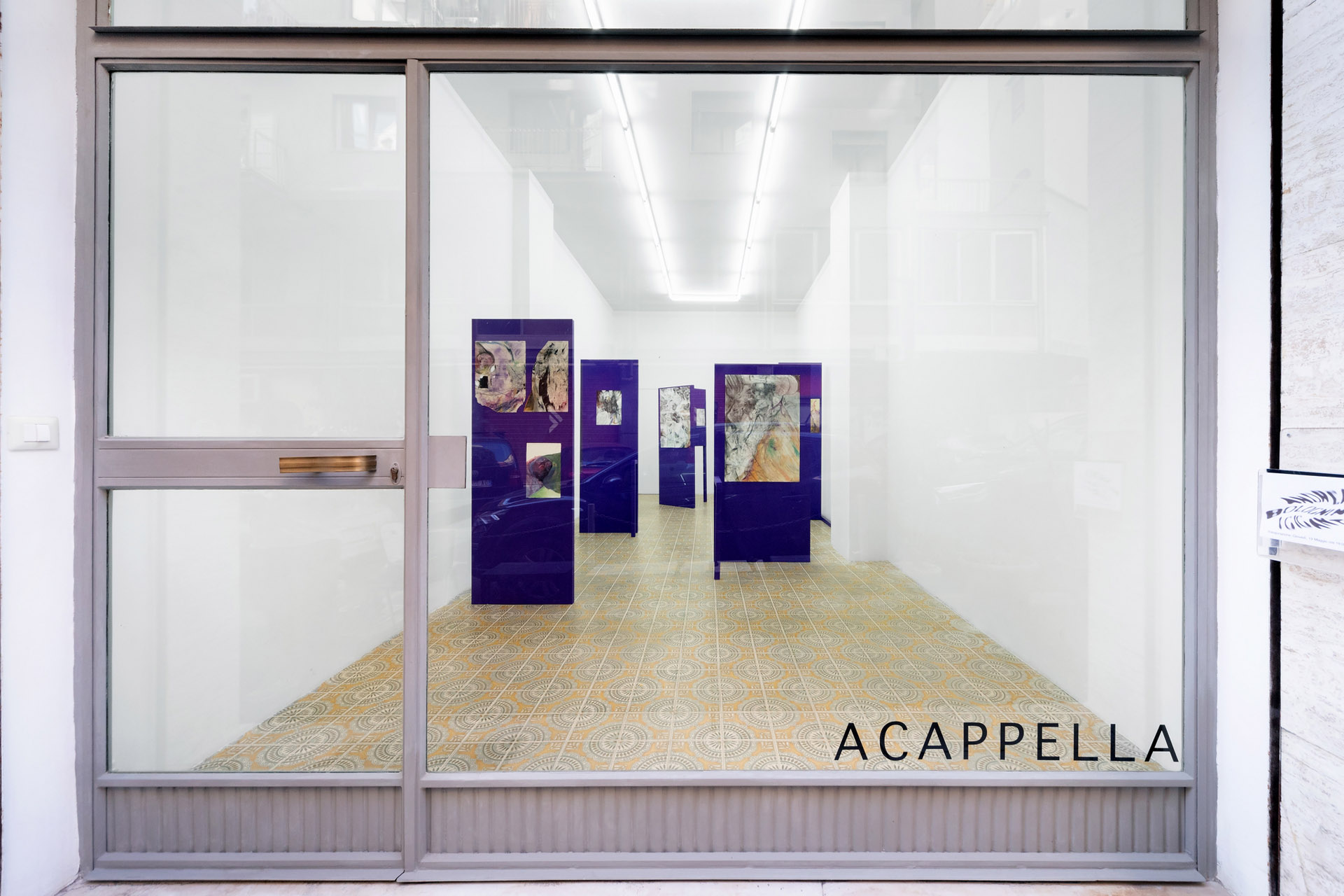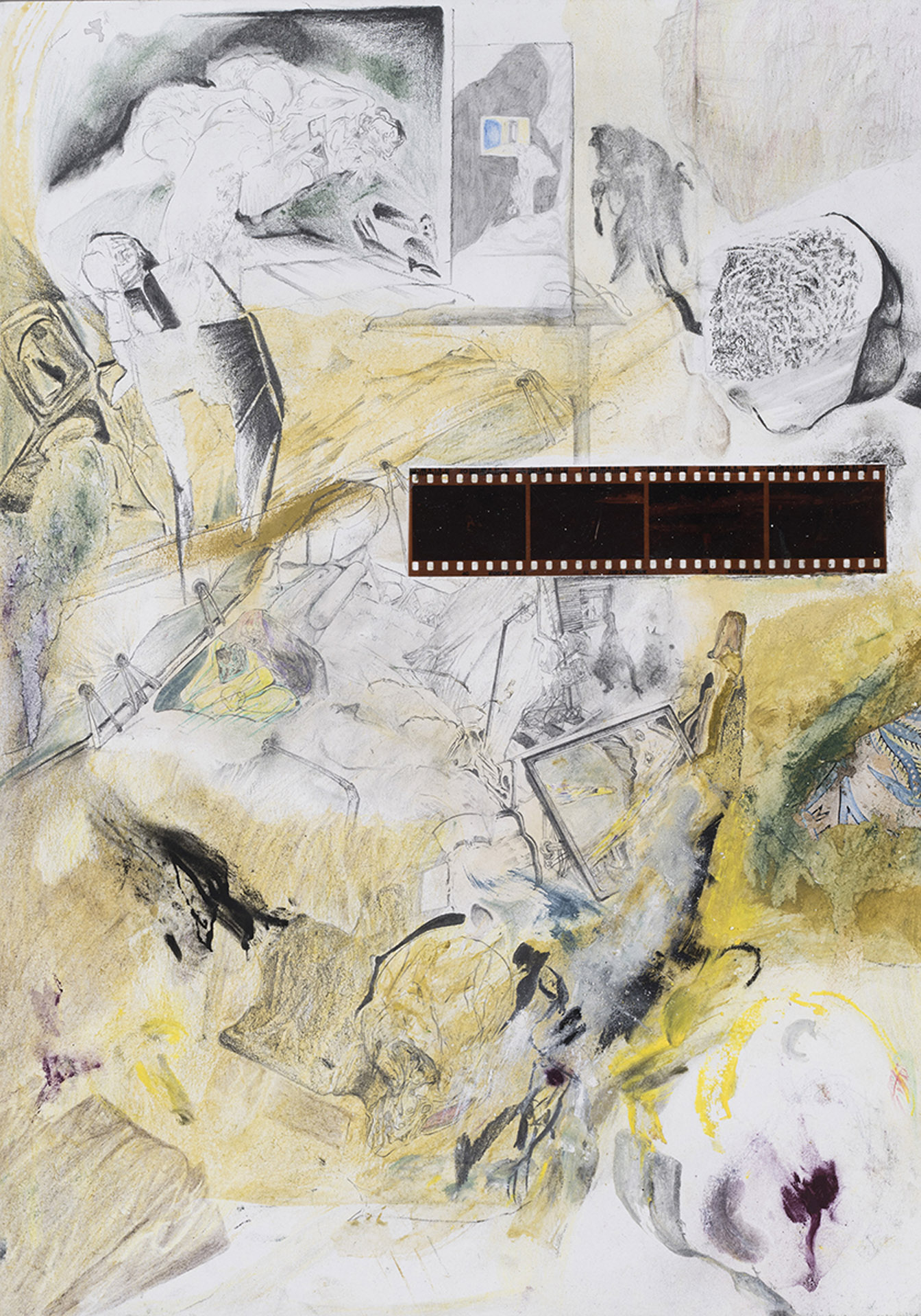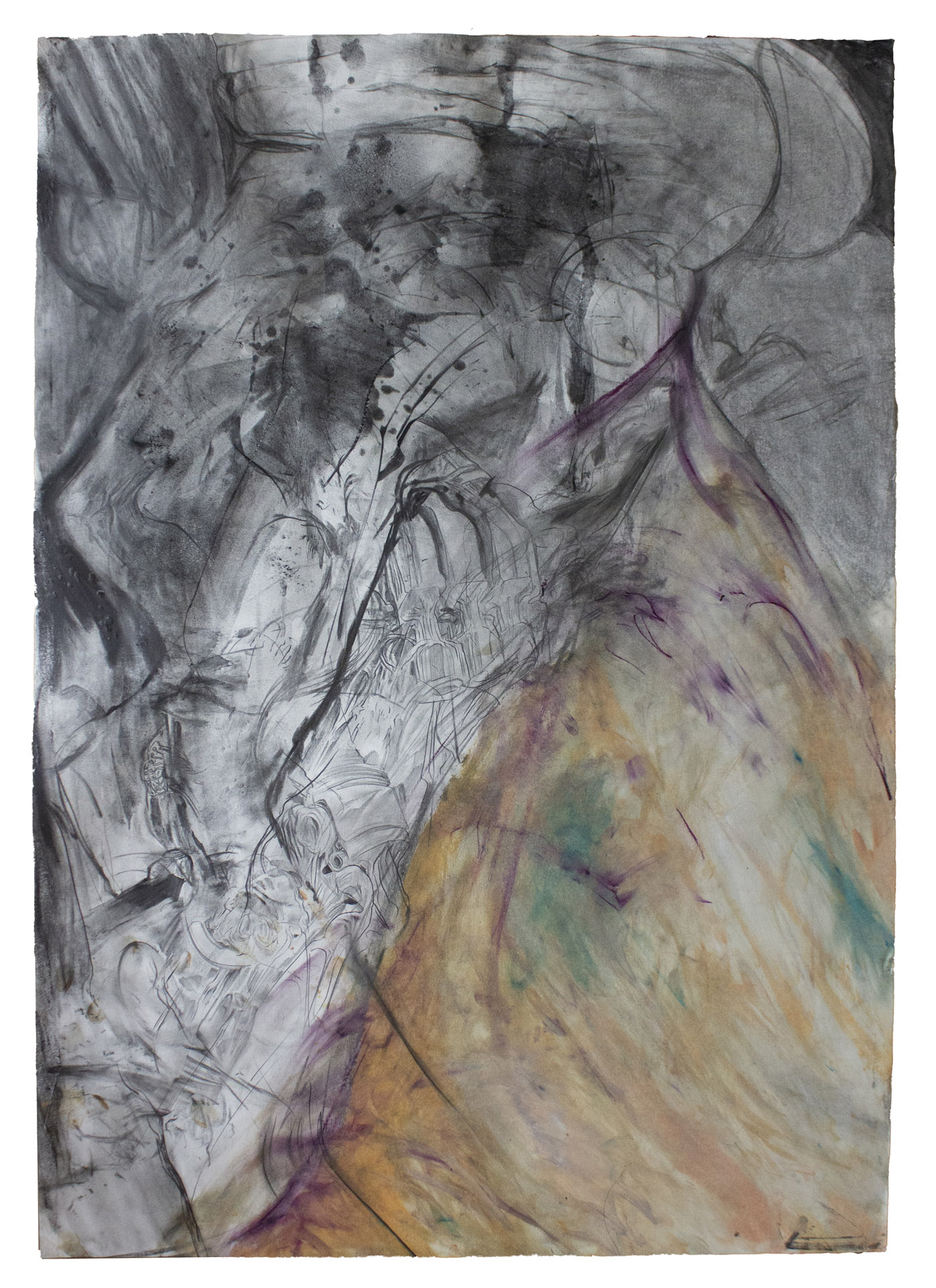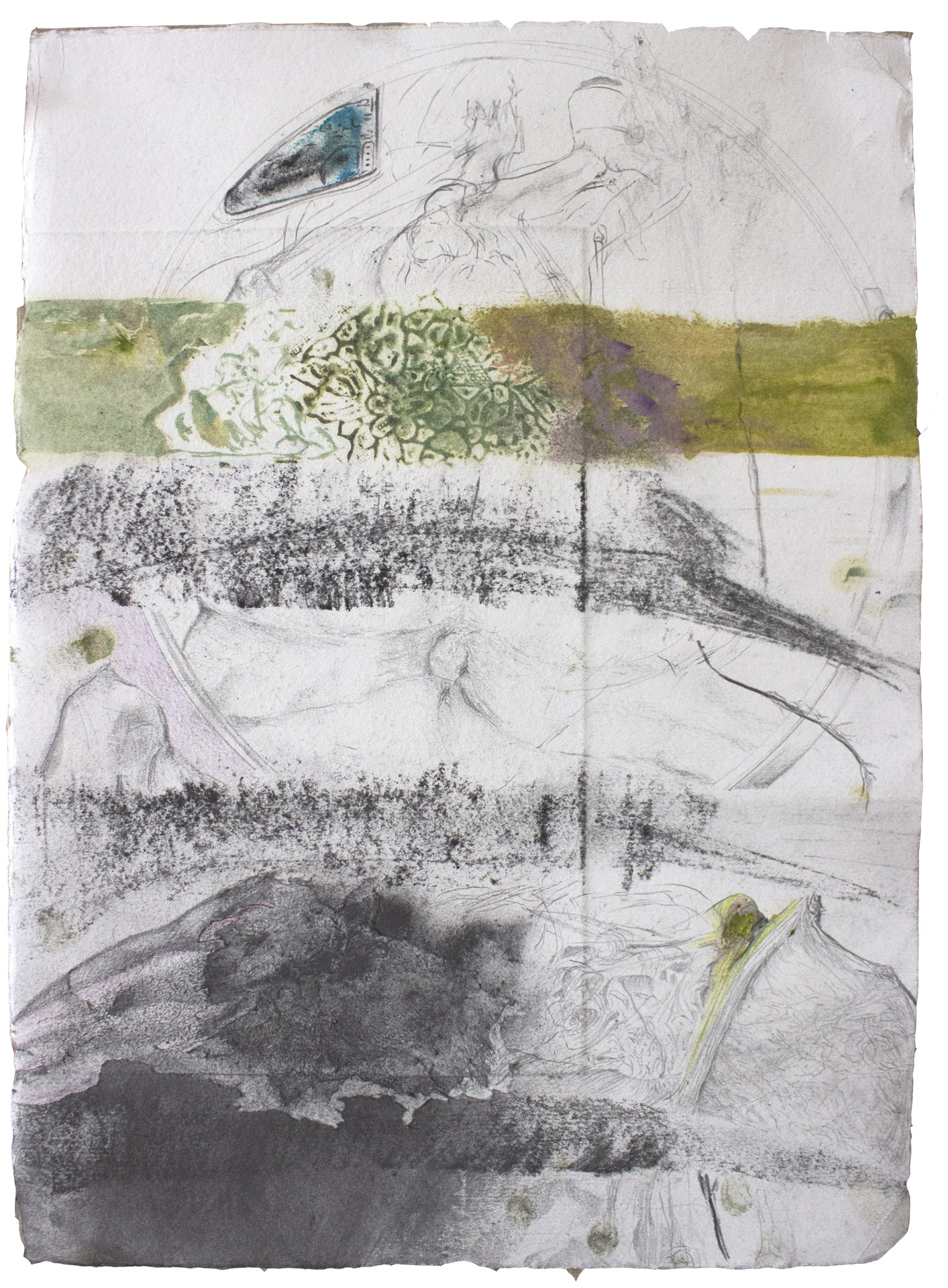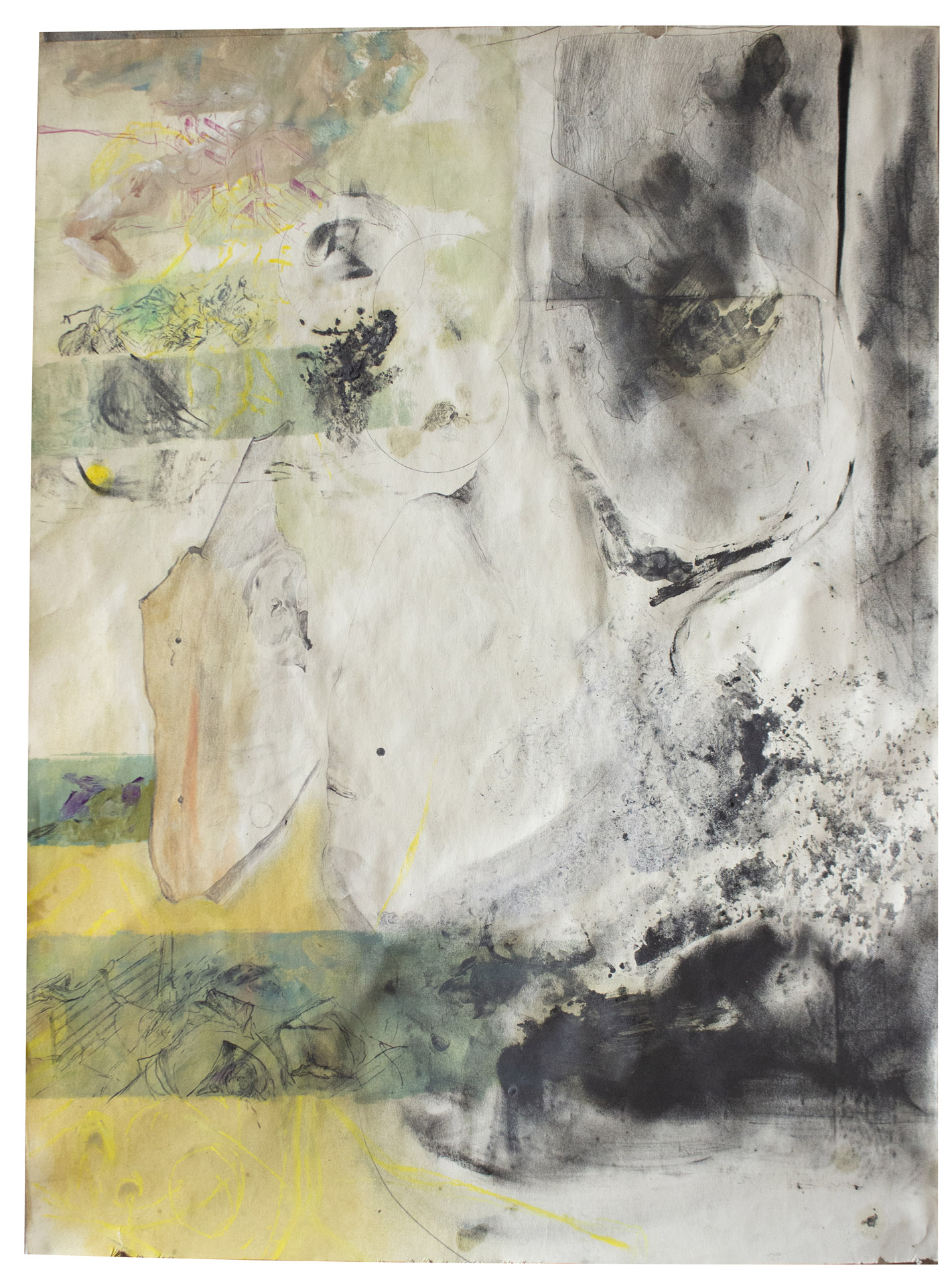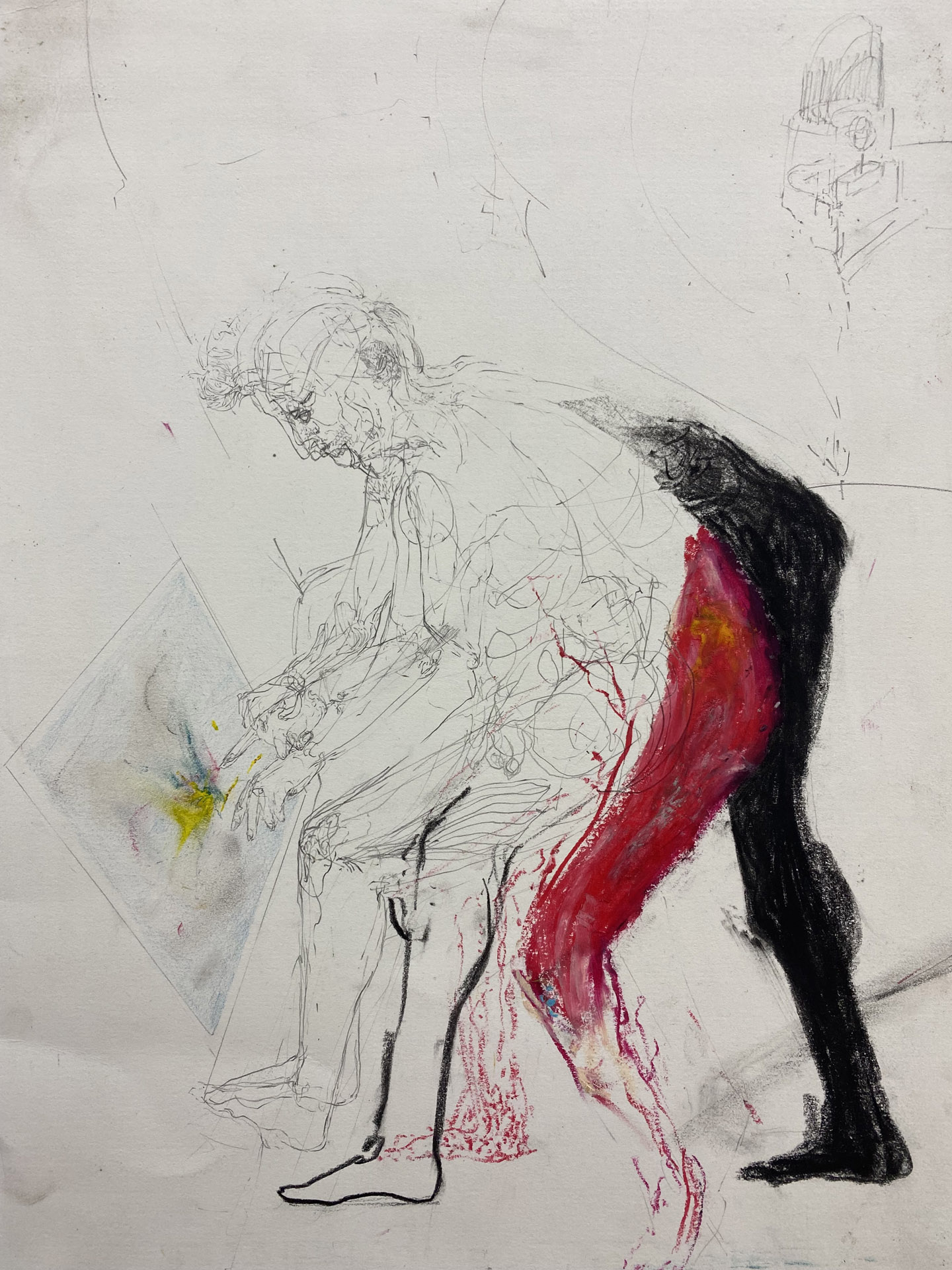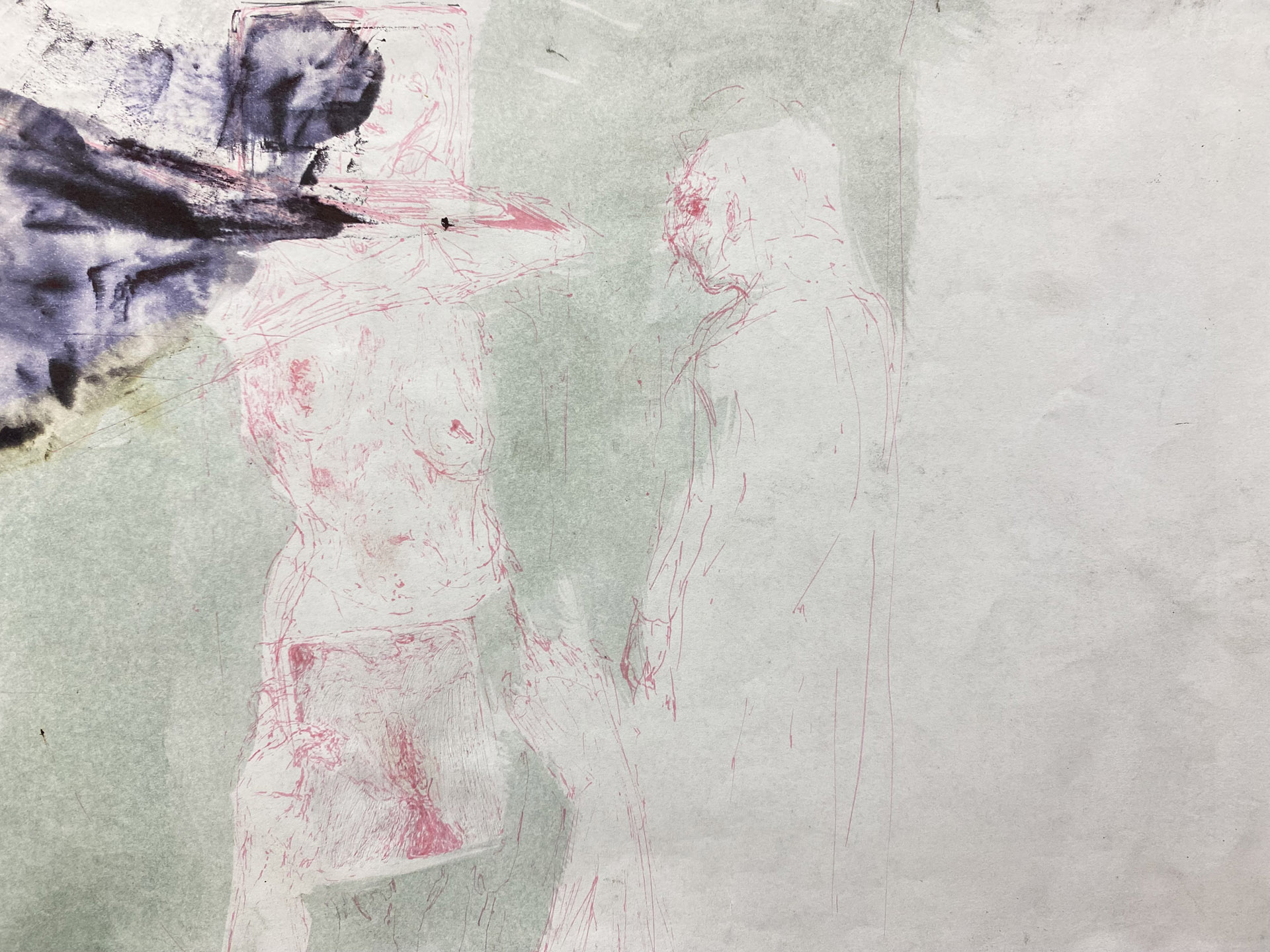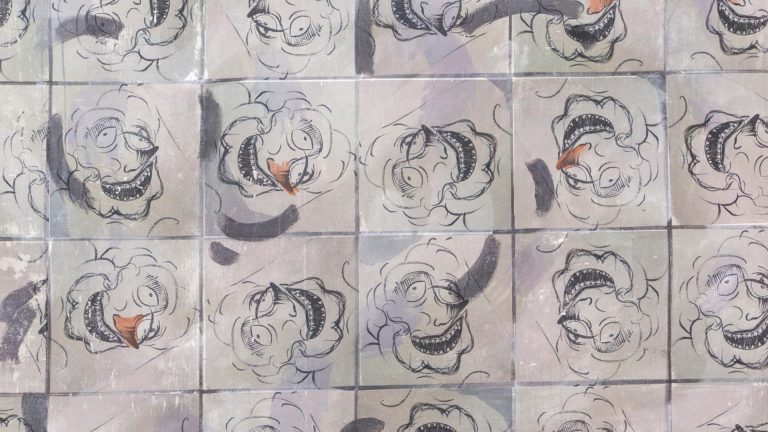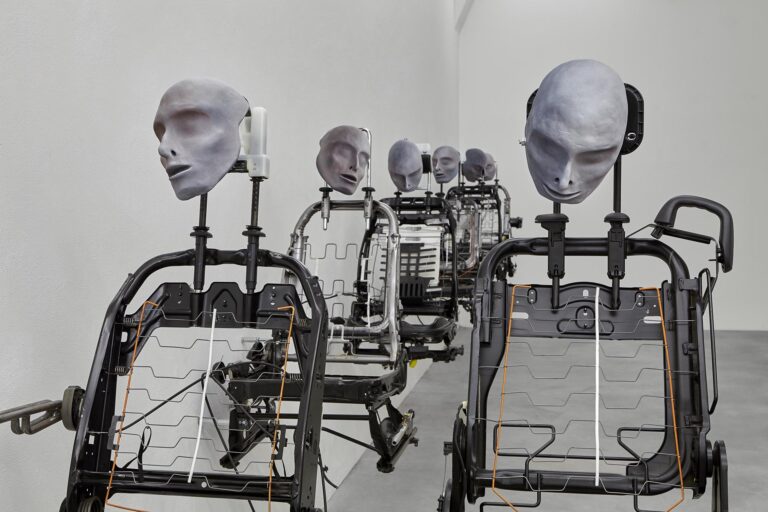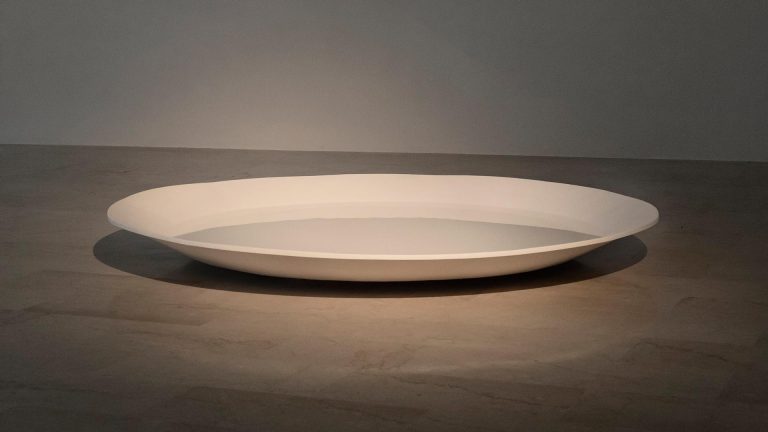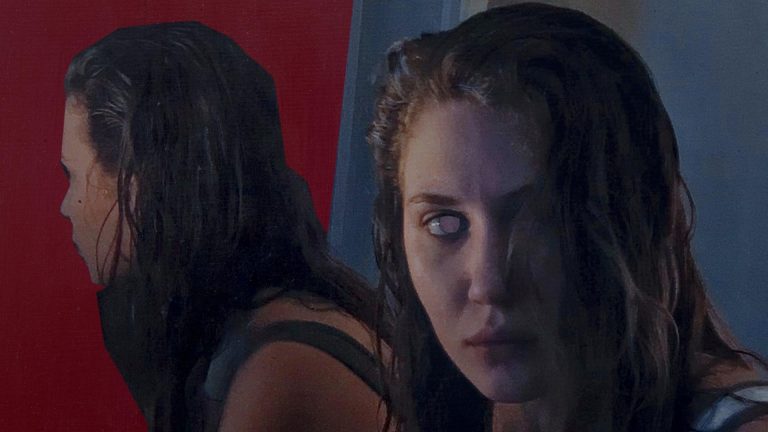Artist: Andrea Bolognino
Exhibition title: I Giganti
Venue: Acappella, Naples, Italy
Date: May 19 – June 20, 2022
Photography: © Danilo Donzelli / all images copyright and courtesy of the artist and Acappella, Naples
The story told is more often a pretext, something that comes before what is written. It is the reality that asks to be transfigured in literature to declare otherwise unspeakable truths and, at times, take on an apotropaic value. The dimension of literature is time, its power unfolds in it, for those who have the patience to listen. Due to a cognitive bias for which I feel a subtle repulsion, I would have liked to engulf the entire book The Giants by Alfred Döblin with a single glance – that narrated story, which is pre-text, precisely – from which the title of Andrea’s exhibition derives. Bolognino. In the daring understanding of the world to which we are obliged, a tortuous path among thousands of inputs that our senses barely support, it is surprising not to be able to take on any information with a single glance. To better explain this feeling of lack in cognitive ability – a diminutio which however qualifies us as human beings and, as such, bound to the materiality of our bodies and the consequent finitude of intellectual potential – we will use as an example a technology to which we are now more than accustomed: the QR code. A visual code that refers to a web page, establishes an unassailable and obtuse truth, makes our status explicit, shows the menu of yet another lounge bar and connects different devices and accounts. We can also pay the gas bill. The more pervasive, and vaguely obsolete, the use of the QR code is, the more amazing it appears there are still mysterious objects and information that do not intend to reveal themselves through it, if not thanks to hours of meditation and dedication. The book, and therefore literature, remains in fact the bulwark of a recent antiquity, a veteran of a mode of appropriation of knowledge that for centuries has represented the only source of supply of information. While the two speeds and dimensions of knowledge still coexist, the desire to instantly grasp the content of Döblin’s novel, flashed the moment I opened the link to the cover of the book sent to me by Andrea Bolognino, triggered a series of digressions. on more or less plausible development prospects of technology and, with this, of the possibilities of the human being. This is perhaps how science fiction books are born. We are only at the title and all the elements are already present that allow us to unhinge that very thin material that occludes the porous surface, modeled by Andrea Bolognino with sharp points, pastiche of techniques and materials, even metal grafts. These are the things that happen from one edge of the sheet to the other and mysteriously take on the appearance of a dystopia, a solitary excursion into aberration and, at the same time, into the jubilation of the possibilities of the body. This happens on paper, both for Alfred Döblin, an expressionist novelist, and for Bolognino, a contemporary draftsman and therefore an experimenter of his time. Where the former demands hours of dedicated reading, the latter satisfies that quick devouring gaze, mentioned above. Yet, Bolognino’s work requires, look after look, to be tested with care, to discover all the labyrinthine passages underlying the magmatic spots in the foreground, almost corresponding to the great movements that continuously animate Döblin’s novel: the revolts of men against states, of men against other men , of humans against machines, of the titanic power of nature that shatters against human-too-human desire. We are in full Noősphera, a post-human humanism: man remains at the center of this futuristic discourse in which the German novelist merged that imaginative proliferation that emerged between the two wars, supported by conspiracy, parapsychology and parascientific theories such as the Welteislehre3, horror and wonder of the twentieth century. On the opposite side, concealed, other scenarios wind their way, described in detail by Bolognino. The theme of the hybridized body has risen to a territory of speculative investigation, muscles that develop from a metal bar and change into flower petals, indistinct limbs from which new life is generated, but also anthropomechanical beings. And then a male back just hinted at by a sinuous line, I dare to call it “naked”, deliberately ignoring that dark skein nestled in the solar plexus. Other completely abstract figures also return the disruptive force of the aspiration to cross the limits of the known and overcome the narrow possibilities of physical reality. It is the myth of Icarus, Andrea Bolognino reminds me. It is the great novel of humanity, whispers Döblin.
-Luciana Berti
Andrea Bolognino, I Giganti, 2022, exhibition view, Acappella, Naples
Andrea Bolognino, I Giganti, 2022, exhibition view, Acappella, Naples
Andrea Bolognino, I Giganti, 2022, exhibition view, Acappella, Naples
Andrea Bolognino, I Giganti, 2022, exhibition view, Acappella, Naples
Andrea Bolognino, I Giganti, 2022, exhibition view, Acappella, Naples
Andrea Bolognino, I Giganti, 2022, exhibition view, Acappella, Naples
Andrea Bolognino, I Giganti, 2022, exhibition view, Acappella, Naples
Andrea Bolognino, I Giganti, 2022, exhibition view, Acappella, Naples
Andrea Bolognino, I Giganti, 2022, exhibition view, Acappella, Naples
Andrea Bolognino, I Giganti, 2022, exhibition view, Acappella, Naples
Andrea Bolognino, I Giganti, 2022, exhibition view, Acappella, Naples
Andrea Bolognino, I Giganti, 2022, exhibition view, Acappella, Naples
Andrea Bolognino, I Giganti, 2022, exhibition view, Acappella, Naples
Andrea Bolognino, I Giganti, 2022, exhibition view, Acappella, Naples
Andrea Bolognino, I Giganti, 2022, exhibition view, Acappella, Naples
Andrea Bolognino, I Giganti, 2022, exhibition view, Acappella, Naples
Andrea Bolognino, I Giganti, 2022, exhibition view, Acappella, Naples
Andrea Bolognino, I Giganti, 2022, exhibition view, Acappella, Naples
Andrea Bolognino, Veli di Tormalina, 2022, oil on paper, 29 x 21 cm
Andrea Bolognino, I Giganti, 2022, exhibition view, Acappella, Naples
Andrea Bolognino, Senza Titolo (studio da Soutine), 2022, wax, ink, oil, graphite pasel on paper, 50×30 cm
Andrea Bolognino, Senza Titolo, 2022, acrylic, ink on paper, 10x13cm
Andrea Bolognino, I Giganti, 2022, exhibition view, Acappella, Naples
Andrea Bolognino, I Giganti, 2022, exhibition view, Acappella, Naples
Andrea Bolognino, I Giganti, 2022, exhibition view, Acappella, Naples
Andrea Bolognino, I Giganti, 2022, exhibition view, Acappella, Naples
Andrea Bolognino, Membra II, 2021, oil on paper, 38 x 24 cm
Andrea Bolognino, Scrolling, 2022, graphite, oil, pastels and collage on paper, 29 x 42 cm
Andrea Bolognino, Kylin, 2022, charcoal, oil on paper, 100 x 70 cm
Andrea Bolognino, Marduk, 2022, graphite, charcoal, oil on paper, 100 x 70 cm
Andrea Bolognino, Wieschinska, 2022, graphite, oil, pastel on paper, 41 x 29 cm
Andrea Bolognino, Velivoli, 2022, pastel, oil, glue, wax on paper, 66 x 50 cm
Andrea Bolognino, Meki, 2022, graphite and oil on photographic paper, 29 x 21 cm
Andrea Bolognino, Scanning II, 2022 graphite, oil on paper, 33 x 25 cm
Andrea Bolognino, Zwitterfigur, 2022, graphite on paper, 33 x 24 cm
Andrea Bolognino, Scanning I, 2022, graphite, oil on paper, 64 x 47 cm
Andrea Bolognino, Senza Titolo (studio dell’ostia profanata), 2021, graphite, charcoal, oil on paper, 29 x 21 cm
Andrea Bolognino, Senza Titolo (da un corpo visto dallo schermo), 2021, Ink, oil on paper, 21 x 29 cm
Andrea Bolognino, Membra I, 2022, oil on paper, 29 x 21 cm

